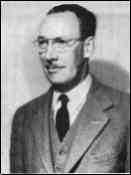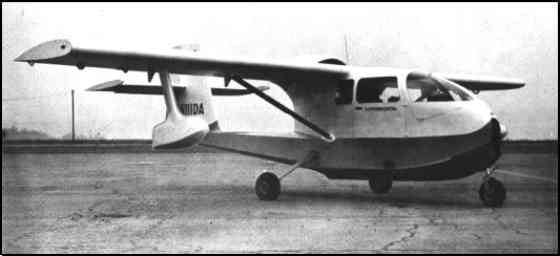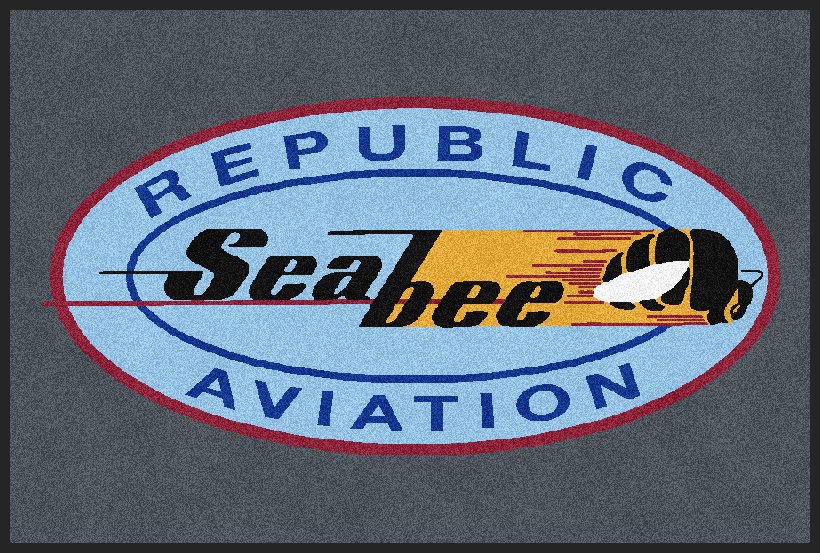| PERCIVAL HOPKINS SPENCER, 1897-1995 |
 |
| Percival Hopkins Spencer, 1956. |
|
By Dale L. "Andy" Anderson Spence's lineage has been traced to the Crusades. Two of his Hopkins forebears were aboard the MAYFLOWER when they landed at Plymouth Rock, one of whom signed the Mayflower Compact. Three brothers in the Spencer family arrived in 1639 with grants from the King and settled the Connecticut cities of Hartford and East Haddam. The third settled Providence, Rhode Island. Spence's grandfather, George Washington Rodgers, was a famous Clipper Ship Captain and sailed the first screw propelled, steam powered ship around the horn to San Francisco and later to Hawaii. His daughter, Georgette, married Christopher Minor Spencer,and from this union, Spence was born April 30, 1897 in Windsor, Connecticut. Christopher Minor Spencer, Spence's dad, was a successful inventor and is credited with invention of the automatic screw machine and the repeating rifle. He had a shooting match with President Lincoln when he demonstrated the rifle to the President because Secretary of War, Stanton, refused to talk to a "crackpot inventor." In response to quizzical expressions as Spence related the incident, he said, "Yes, it was my father, not grandfather." He then informed the audience that his father was 63 years old when he was born. The Spencer Repeating Rifle is credited as having shortened the Civil War and for deciding the battle of Gettysburg. Even as a youngster, Spence exhibited a creative mind and mechanical ability. With three feathers from his pigeon loft, he made a successful ornithopter and used this expertise later in life to market a rubber propelled model which in 1958 was adjudged one of the ten best toys of the year. Further development resulted in a motor powered version, one of which is on display in the Smithsonian Air and Space museum as a World's First. Christopher was very supportive of his son's endeavors and permitted him full use of his shop and provided an open account to purchase materials needed. When Popular Mechanics Magazine published plans for a hang glider, the youngster built one, thus providing the means to make his first solo flight April 2, 1911 at age thirteen from Prospect Hill in Keeney Park. Having a rather frail physique, he suffered skinned knees and elbows and bruised his back when landing, as he could not run fast enough with the glider slung to his shoulders. He quickly ascertained that shifting weight to obtain control was not the way to fly, so installed a three axis control system and made twin pontoons from stove pipe with soldered joints reinforced by spruce stringers. When towed behind his father's boat with 300 feet of rope and assisted by an 8 to 10 knot wind, he was able to become airborne. The drag of the glider was so great that it was forced to follow the boat and could not be cut loose as it needed the help of the boat to remain in flight. |
 |
||
|
The day of my first solo in "motor-powered" airplane. Connecticut River, Hartford May 15, 1914, P.H. Spencer. |
 |
||
| The Spencer Air Car. |
|
In 1968, he designed and marketed with his partner, retired USAF Col.
Dale L. Anderson, the 4 passenger Spencer Amphibian Air Car,
(S-12C, D, E) as home built kits. In 1980, he began design of the S-14, a
two passenger Air Car, Jr. amphibian of advanced composite
construction with folding wings for highway transport. Spence was pilot
on the first flight of this plane November 4, 1983 at age 86 years,
7 months, as well as being pilot on all subsequent flights totaling 38
hours. This aircraft has been donated to the Experimental Aircraft
Association Museum in Oshkosh, WI.
We recently contacted Early Bird P.H. Spencer to learn what progress he has made with his home-built amphibian airplane. He wrote us as follows: "First flight of one hour was made at Chino Airport, Cal., on May 25, 1970, and initial water tests were made at Lake Havasu on the Colorado River, July 8, 1970. Late in July, the Air Car was ready for the trip to the E.A.A. Fly-in at Oshkosh, Wis. However, we were weathered in along with others, for five days at Kansas City and missed our opportunity to demonstrate the Air Car. There were many who were expecting to see the Air Car there and we were disappointed in not arriving. We continued the tour Eastward as originally planned and made a 5,000 mile circuit via Pittsburg, Mobile, New Orleans, Houston, El Paso, Tucson and Los Angeles. Since our return home, the Air Car has been flown at West Coast Fly-ins and for local testing and demonstrations. It now has over 180 trouble-free hours of flying time including some 150 landings in salt water and thanks to the Wood Hull Construction, corrosion is not a problem. As of this date, many plans have been purchased and several of the builders are well along with construction. Col. Dale L. Anderson and myself built the Air Car in a two-car garage with the usual hobby shop tools with the exception of certain parts of the landing gear, which required machine shop equipment. It was completed in 18 1/2 months and flown two weeks later. The cost of construction was $4700.00 less engine, propellor, instruments and radio. Completed cost was $8700.00 powered with a low time 180 H.P. 0-360 Lycoming engine, constant speed Hartzell propellor and full group instrument panel with used Bendix 220-Nav/Com. Many pilots have flown the Air Car and speak highly of its fine handling qualities, especially in the water. It now is stressed for 3100 lbs. gross weight (Standard category) and 260 H.P. This will provide high lake operation capability with 1050 lbs. of useful load." When Spence retired from flying in 1987, he had been flying longer than any other person, and was believed to be the oldest licensed pilot in the United States. The Early Birds of Aviation is an exclusive group who flew solo before December 17, 1916. Of the 598 original Early Birds, Spence was one of the four remaing members Spence passed away quietly in his sleep early morning January 16, 1995 in the Del Amo Nursing Home, Torrance, California. Interment of his ashes will be in the family plot, Windsor, Connecticut. Reverend Patrick J. McPolin, a Life Member EB and long time, dear friend, eulogized Spence in a memorial service at Domingues Chapel, Rancho Domingues, CA., February 10, 1995. This was most appropriate since the Domingues Ranch Adobe, now the Domingues Seminary, was the site of the first air meet in the USA in 1910. Father Pat, with the chapel reflecting an aviation atmosphere, programmed an outstanding service. He had arranged a large easel draped in black holding a helmet and goggles and photo portrait of Spence taken about 15 years ago, just as we wished to remember him. The base of the easel was blanketed with beautiful floral tributes. Father Pat maintained the aviation theme as he officiated wearing a black leather flight jacket in lieu of his clerical robes. Following the service, there was a flyby with one of Spence's famous designs, a Seabee, in the lead. We wish that all Spence's freinds could have been present at this most memorable occasion. Thank you Father Pat. Twelve years ago, Spence attended a commemoration service for a pilot friend at Whiteman Airpark restaurant and stated he would like to have one when his time came, but believed a hangar would be a more appropriate place for fly-boys. He discussed this with a friend whose hangar is much larger than mine, and he quickly agreed to offer his for the occasion. We expect to announce the date in the very near future, hopefully, about mid March. |

Home